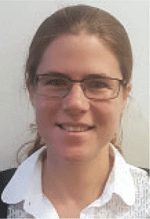High frequency full waveform inversion as an interpretation solution
Laurence Letki A C , Matt Lamont B and Troy Thompson BA DownUnder GeoSolutions, 80 Victoria Street, London, SW1E 5JL, UK.
B DownUnder GeoSolutions, 76 Kings Park Road, West Perth, WA 6005, Australia.
C Corresponding author. Email: laurencel@dug.com
The APPEA Journal 59(2) 904-908 https://doi.org/10.1071/AJ18123
Accepted: 12 March 2019 Published: 17 June 2019
Abstract
The amount of available data to help us characterise the subsurface is ever increasing. Large seismic surveys, long offsets, multi- and full-azimuth datasets, including 3D and 4D, marine, ocean-bottom nodes and extremely high fold land surveys, are now common. In parallel, computing power is also increasing and, in combination with better data, this enables us to develop better tools and to use better physics to build models of the subsurface. Wave-equation based techniques, such as full waveform inversion (FWI), have therefore become a lot more practical. FWI uses the entire wavefield, including refractions and reflections, primaries and multiples, to generate a refined, high resolution Earth model. This technique is now commonly used at lower frequencies (up to 12 Hz) to derive more accurate models for improved seismic imaging and reduced depth conversion uncertainty. By including higher frequencies in FWI, we can attempt to resolve for finer and finer details. FWI models using the entire bandwidth of the seismic data constitute an interpretation product in itself, with applications in both structural interpretation and reservoir characterisation. Incorporating more physics within the FWI implementation, combined with modern supercomputer facilities, promises to increase the focus on very high frequency FWI in the coming years. In this paper, through a series of field examples, we illustrate the applications and rewards of high frequency FWI: from improved imaging, improved quantitative interpretation and depth conversion to a direct interpretation of the FWI models.
Keywords: FWI, imaging, seismic.

Laurence Letki graduated from Ecole Polytechnique in 2007 and holds an MSc in Naval Architecture from the University of Southampton (UK) and an MSc in Geomatic Engineering from University College London (UK). Laurence’s career began in the French Hydrographic office, specialising in hydrographic, oceanographic and geophysical surveys. She then moved to WesternGeco in 2009 and held several positions, including area geophysicist and product champion, responsible for the testing and commercialisation of new seismic processing and imaging technologies, before joining DownUnder GeoSolutions (DUG) in 2017. Laurence is DUG’s Principal Geophysicist. Laurence is a member of SEG and EAGE. |

Dr Matthew Lamont is founder and Managing Director of DUG. Matt sets the company’s strategic direction and remains intimately involved in the company’s research and development and DUG McCloud. Matt holds a PhD in Geophysics from Curtin University of Technology, where he is an adjunct associate professor. Matt’s working career spans 25 years, commencing in Woodside’s geophysics group. Later, Matt was the technical lead for the seismic processing and imaging team for BHP Billiton, based in Houston (TX, USA). At stages during his pre-DUG career, Matt was also involved in the inversion and rock physics research and application. |

Troy Thompson is a founding partner of DUG, where he is currently Head of Geophysical Research. Troy has published papers on a variety of subjects that span seismic processing, anisotropy and quantitative interpretation. Troy holds a PhD in Geophysics from Curtin University, where his academic excellence was recognised with several scholarships and prizes. Troy completed his PhD in 2004, and joined Matthew Lamont to start DUG. Troy is a member of SEG, EAGE, ASEG and PESA. |
References
Energy-pedia (2018) Australia: Carnarvon looking to take Buffalo oil field project forward to drilling and redevelopment. Available at https://www.energy-pedia.com/news/australia/carnarvon-looking-to-take-buffalo-oil-field-project-forward-to-drilling-and-development-172908 [verified 2 April 2019].O’Neill, A. J., and Thompson, T. A. (2016). Improved depth conversion with FWI – a case study from the NW shelf, Australia First Break 34, 85–88.
Warner, M., Ratcliffe, A., Nangoo, T., Morgan, J., Umpleby, A., Shah, N., Vinje, V., Štekl, I., Guasch, L., Win, C., Conroy, G., and Bertrand, A. (2013). Anisotropic 3D full-waveform inversion Geophysics 78, R59–R80.
| Anisotropic 3D full-waveform inversionCrossref | GoogleScholarGoogle Scholar |


